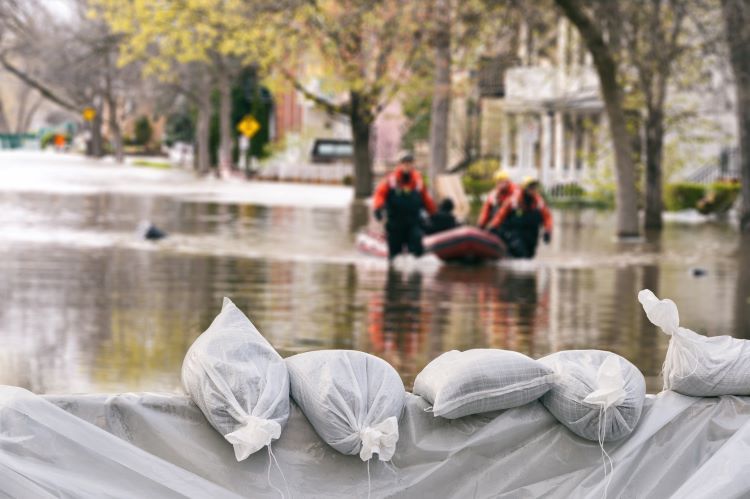Blog
Post-Flood Safety Guidelines: Keeping Your Workforce Safe
California is only the most recent region to experience torrential rainfall and flooding. In 2022, there were five 1-in-1,000-year flooding events that devastated communities, reshaped lives, and forced business owners to learn how to clean up after a flood, many for the first time.
If you are an employer with a business that was flooded, in a region that is susceptible to high water, or manage a business responsible for flood cleanup, it’s critical to prepare as much as possible for the extremely hazardous conditions that come during and after floods. Even basic preparedness can help avoid severe injury and sickness.

It is always best to avoid entering flooded areas, and if possible, to have your facilities professionally cleaned and up and running before re-entering. If you must enter areas where flooding may still be present, or has recently receded, there are a few things to remember that may help keep you and your employees safe. A list of some of these items is outlined below, as well as a group of links to applicable OSHA and CDC documents that may be helpful. No list is exhaustive, so you will need to ensure you assess each situation and challenge, to provide your employees with the appropriate equipment and/or assistance.
| Applicable Links | ||
|---|---|---|
Basic Supplies and Needed Items
- A large amount of purified drinking water. The flooded areas are not going to have functioning water systems. Both the work and the heat in these areas will be compounded by the PPE required to work in flooded areas. Larger amounts of water than normally consumed will be needed.
- Anything employees can use to provide shade, air movement, or other methods of cooling. This may include frequent breaks in an air-conditioned cab or cold neck wraps.
- Provide plenty of sanitary supplies including toilet paper, hand sanitizer, enough water to wash hands, etc. If employees are in the thick of it, there will be no functioning sewer systems.
- Do everything possible to provide showers at the end of the day for both your workers and their waders, boots, etc.
- Electrical hazards must be completely avoided. Downed lines or other electrical hazards should be a no-go for your employees. Only enter areas that have been cleared by a power company employee.
- When driving, avoid flooded streets. Do not drive into an area with an unknown water depth OR unknown condition of the roadbed. Driving through moving water is extremely hazardous and should be avoided. This is a very common fatality issue in flooded areas. Be aware of above ground chemical storage tanks and if known or seen, below ground chemical storage tanks. Many times, they will have released their chemicals in a flood. If you smell chemicals, and/or see a sheen on the water, move far away from it.
- As time passes, mold will become an issue in residences and buildings. If you encounter any visible mold growth or are entering an area 48 hours or more after the water recedes, be aware of this hazard. Do not enter buildings with any signs of mold growth.
- Be aware that snakes, rodents and even pets have been displaced. Avoid them no matter how much you want to help.
- Lighting will be in short supply. You will need headlamps, powerful flashlights, and plenty of batteries. Avoid working in the dark as much as possible.
OSHA Recommendations
People involved in flood cleanup should take the following precautions:
- Wear a hard hat, safety glasses, reflective vest, gloves, and steel-toed work boots.
- In wet environments, stay dry with waterproof gloves and boots.
- Breathe safely and use respiratory protection, especially where dust and mold exists.
- Avoid dangerous falls, and use fall protection when working more than 6 feet off the ground.
- Protect your hearing. In loud and noisy environments, hearing protection is important.
- Work cleanly. Stop the spread of contaminants and disease with proper hygiene and sanitation.
- Wash your hands regularly. Where suitable facilities are absent, use hand sanitizer.
Dewatering and Dehumidifying
This process should be started as soon as possible. The water your building was exposed to contained nutrients that will assist mold growth. A professional disaster recovery contractor is the best resource to get this process started. CDC guidelines recommend thorough cleaning and dehumidifying within 24 to 48 hours. This listing is a basic guide. In assessing dangerous situations, always defer to civil authorities.
Contact us if you or your business want to learn how to protect your workforce from the hazards that come with cleaning up and restarting work after a flood.
Author
Table of Contents













